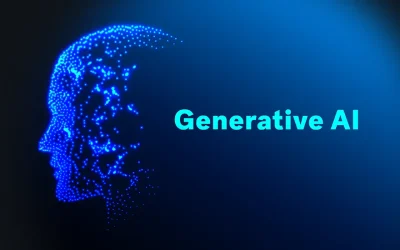In current digital era, audio excellence is important in the overall user experience. Whether it’s watching videos, listening to music, or joining virtual meetings, poor audio can considerably lessen the fun and effectiveness of these events. By chance, developments in artificial intelligence (AI) have opened up new opportunities for improving audio quality. This inclusive article will explore the significance of audio quality, the role of AI in audio restoration, common audio quality issues, an introduction to AI in audio enhancement, AI-based audio enhancement tools and techniques, and best practices for enhancing audio quality with AI.
Understanding the Importance of Audio Quality
High-quality audio is crucial for a variety of causes. Firstly, it meaningfully affects the user experience. Whether it’s a music fan, a podcast listener, or someone joining a virtual meeting, users suppose clear and crunchy audio. It increases absorption, creates an intellect of presence, and ensures that every sound is correctly reproduced.
On the other hand, Poor audio quality can be highly frustrating and distracting. Background noise, static, or distortions can make it puzzling to focus on the proposed content, leading to lessened engagement and comprehension. In a professional environment, such as presentations or online conferences, subpar audio quality can damage credibility and professionalism.
Key Steps in Audio Restoration
There are many key steps involved in audio restoration, major of which are given below.
Noise Reduction:
Background noise, such as hum, hiss, and static, is one of the most general concerns in ancient recordings. Noise reduction tools assist separate the annoying noise and reduce it without disturbing the desired audio. It’s like purifying out the static from a radio recording, so you only hear the music or voice clearly.
Click and Pop Removal:
Often this is essential when working with old cassette tapes or vinyl records. As the tape heads or stylus move, they can pick up clicks or pops. Dedicated AI algorithms can identify and eliminate these interruptions, leaving behind only the smooth flow of sound.
Click and Crackle Detection:
Sometime clicks and crackles originate from damaged media (like tapes or vinyl) or wear and tear over time. AI Audio restoration software can detect these failures and wisely correct them without changing the overall sound.
Frequency Restoration:
Old recordings, sometimes, undergo a loss of certain occurrences due to poor recording systems. Reestablishing these frequencies assists in bringing back the natural stability of the sound. For example, if a recording sounds lowered or tinny, frequency restoration can restore full sound in a natural way.
Dealing with Distortion:
Distortion is a result of clipping (when the sound is too high in frequency for the apparatus to handle) or magnetic tape ruin. Restoration tools can minimize or fix this distortion, making the audio stronger and more reliable.
Stereo Imaging and EQ Adjustment:
Audio restoration can also comprise improving the stereo image (how the sound is dispersed between the right and left channels) and adjusting the equalization (EQ) to make the recording sound more balanced and enjoyable to the ear.
The Impact of Audio Quality on User Experience
Audio quality has a deep impact on the overall user experience. When audio is gem clear, it boosts the involvement and enjoyment of any multimedia experience. From listening to music to watching movies, excellent audio rouses the senses and makes a more attractive and pleasant experience.
Poor audio quality, on the other hand, can significantly diminish the user experience. Users may become irritated or detached if they are not clear to understand or hear what is being said. Clearness and intelligibility are particularly important in perspectives where communication is necessary, such as training sessions or online meetings. The enhanced the audio quality, the more commendable participants can talk about information and ideas.
Let’s consider joining a virtual concert, as the dim lights and the music start playing, you keenly await the time when the artist’s voice blocks the room. With high-quality and excellent audio, every letter is clear and crisp, echoing through everyone’s soul. You can feel the vitality of the gathering, even though you are in the leisure of your own home. The immersive experience transforms you into the temperament of the performance, making it touch like you are right there, in the center of the action.
Now, let’s consider the opposite situation. You are joining an important online professional meeting. As anyone begins presenting, you are unable to hear their words clearly over the disturbing background noise. The audio is dull, making it difficult to hold the details and tones of the discussion. Your irritation grows as you struggle to participate efficiently, and you catch it puzzling to stay involved throughout the meeting.
The Role of AI in Enhancing Audio Quality
Artificial intelligence provides thrilling opportunities for enhancing and restoring audio quality. By implementing neural networks and machine learning algorithms, AI can efficiently explore and deal with audio signals to lessen noise, increase clearness, and recover overall sound quality.
AI algorithms can easily recognize and sort out background noise, reverberation, echo and other common audio quality concerns. Through cutting-edge algorithms and adaptive filters, AI-based audio development technology can distinct desired sound sources from annoying noise, bringing about considerably improved audio quality.
Furthermore, AI can also explore audio files for irregularities in volume levels and animatedly correct them to ensure a reliable and pleasant listening experience. This is mostly useful when dealing with audio tapes from different sources.
Let’s suppose you are listening to a podcast taped in a busy cafe. The clanking of cups and the buzz of discussions create a disturbing background noise that hinders your capacity to fully enjoy the lyrics. However, with AI-powered audio development, the algorithms professionally recognize and destroy unwanted noise, letting you focus on the podcast host’s voice and the appreciated insights being shared.
AI’s role in improving audio quality drives beyond just noise reduction. It can also develop speech intelligibility, making it easier to understand discussions in puzzling auditory environments. Whether you are joining a virtual conference with members from around the globe or listening to an audiobook while traveling, AI can optimize the audio to make sure clear and comprehensible speech, improving your overall listening experience.
AI Techniques for Audio Restoration and Beyond:
Artificial Intelligence (AI) has revolutionized audio restoration and enhancement by presenting advanced techniques and algorithms that transmite how sound is processed, restored, and optimized. These techniques bind the power of machine learning and data-driven algorithms to develop audio quality, restore dishonored soundtracks, and even make totally new auditory experiences. Here’s a closer gaze at the cutting-edge AI techniques that are restructuring the audio landscape.
1. Noise Reduction with AI
Noise reduction is one of the most common uses of AI in audio restoration and enhancement. AI-based noise reduction goes beyond old methods by learning to discriminate between preferred audio (like music or speech) and unwanted noise such as hiss, static, or hum.
Deep Learning Models: Neural networks are trained on large datasets comprising clean and noisy audio datasets. Models like Convolutional Neural Networks (CNNs) and Recurrent Neural Networks (RNNs) can recognize and destroy background noise without mortifying the main audio motion.
Spectral Subtraction: AI analyzes the frequency range of audio to reduce and isolate annoying noise while maintaining the original sound.
Use Cases: call center recordings, Podcast editing, and live broadcasts.
2. Automatic Equalization (EQ)
AI-powered automatic equalization systems explore audio in real time and apply vibrant amendments to develop tonal stability. This is mainly useful for music creation and discussion improvement.
Adaptive EQ: AI learns the features of the audio and adapts the frequency comeback to improve clearness and richness.
Genre-Specific Processing: AI systems are able to recognize the type of a soundtrack and apply EQ settings that are adjusted for that style of music.
Use Cases: music production, audio mastering, and live performances.
3. Audio Source Separation
Source separation includes separating individual modules of a mixed audio track, such as instruments, vocals, or background noise.
Deep Neural Networks (DNNs): AI models like Open-Unmix and Wave-U-Net are proficient in spoiling audio into its constituent parts.
Blind Source Separation: By means of unsupervised learning, AI splits up audio sources even when no former information about the mix is available.
Use Cases: Audio editing, Karaoke track creation, and forensic analysis.
4. Audio Restoration and Repair
AI surpasses in restoring degraded or damaged audio by recognizing and mending imperfections.
Spectral Repair: AI identifies pops, gaps, or clicks in audio and rebuilds the missing data by exploring adjacent frequencies.
Declip Algorithms: When audio is clipped and overdriven, AI algorithms are able to rebuild the lost points, restoring the ordinary dynamics of the sound.
De-Reverb: AI lessens extreme reverb in recordings, often affected by poor audibility while preserving the reliability of the original sound.
Use Cases: Remastering music, Archiving old recordings, and improving live recording quality.
5. Speech Enhancement
AI-powered speech development focuses on enlightening the perspicuity and quality of spoken audio, making it richer and clearer.
Voice Activity Detection (VAD): AI spots and separates speech from other sounds in a recording.
Speech-to-Noise Ratio Improvement: Algorithms boost the status of speech while conquering background noise.
AI-Driven Voice Enhancement: Tools like Adobe Podcast AI crisp and enhance intensify vocal clarity while eliminating disturbing components like room echo or keyboard clicks.
Use Cases: podcast editing, video conferencing, and customer service recordings.
6. Audio Upscaling
AI-based upscaling boosts the quality of fuzzy or distorted audio by forecasting and producing missing audio information.
Super-Resolution Audio: It is similar to image upscaling, AI adds more detail to audio by rebuilding high-frequency content lost during compression.
Neural Upsampling: AI uses deep learning classical to raise the sample rate and bit depth of audio files, bringing about clearer, more detailed sound.
7. Real-Time Audio Enhancement
Real-time processing is serious in software where instant feedback is required, such as virtual meetings or live performances.
AI-Powered Noise Cancellation: AI constantly evaluates incoming audio and eliminates noise, even in vibrant environments.
Dynamic Audio Adjustment: Real-time algorithms modify EQ, volume, and spatial stuff on the fly to preserve steady quality.
Use Cases: live streaming, Gaming headsets, and online meetings.
8. Emotional and Contextual Analysis
AI can explore the emotional tone or “context of audio” and make enrichments accordingly.
Emotion Recognition: AI spots emotional signals in speech, such as joy, anger, or sadness, and amends the audio to magnify or balance the mood.
Use Cases: Customer service, Film production, and virtual assistants.
9. Spatial Audio and 3D Sound Enhancement
AI assist in creating immersive soundscapes by improving spatial audio stuff.
Binaural Rendering: AI mimics how sound would be observed in a 3D atmosphere, making it more realistic.
Dynamic Spatialization: AI modifies the spatial assets of sound based on listener position or device placement.
Use Cases: Virtual Reality, Gaming, and cinematic audio.
Popular AI-Based Audio Restoration and Enhancement Tools
AI-based audio restoration and enhancement tools are transforming the way we improve sound quality, providing dominant and user-friendly solutions for chores like voice enhancement, noise reduction, and audio restoration. Here’s a stare at some of the most prevalent tools and their standout features.
iZotope RX
iZotope RX is a highly professional-grade audio restoration and recovery tool generally used in podcasting, music production, and film post-production. It is the best in de-clipping, noise reduction, and removing imperfections like hums and clicks. Its native interface and innovative spectral editing features make it a favorite among audio engineers and producers.
Descript Studio Sound
Descript Studio Sound is an AI-driven tool personalized for content creators and podcasters. It streamlines audio editing with specifications like vocal enhancement, noise suppression, and automatic removal of filler words. Its easy design lets creators produce high-quality audio efficiently and quickly.
Adobe Podcast AI Enhance
Adobe Podcast AI Enhance is a cloud-based software intended to develop vocal recordings. It spontaneously cleans up speech by balancing audio levels, removing background noise, and enhancing vocal clarity, making it ideal for remote workers and podcasters who need an effective and quick solution.
Spleeter by Deezer
Spleeter by Deezer specifies audio source parting, allowing operators to separate vocals, instruments, or other components from a mixed track. This is an open-source tool that is popular among DJs, musicians, and producers for its capacity to extract spotless components for editing or remixing.
Krisp
Krisp is a real-time noise elimination tool planned for calls, virtual meetings, and recordings. It uses AI to conquer background noise, certifying clear communication in go-ahead environments. Its smooth integration with popular conferencing platforms makes it a vital tool for remote workers.
Dolby On
Dolby On is a mobile app that boosts audio recordings with dynamic EQ, AI-powered noise reduction, and stereo widening. It’s perfect for persons who have to capture high-quality sound on the go, whether for podcasts, music, or personal projects.
Conclusion
AI is not just revolutionizing audio restoration and beyond; it’s transforming how we interact with sound. From reviving elapsed recordings to enhancing up-to-date productions, AI is a vital ally in the journey for perfect audio.



